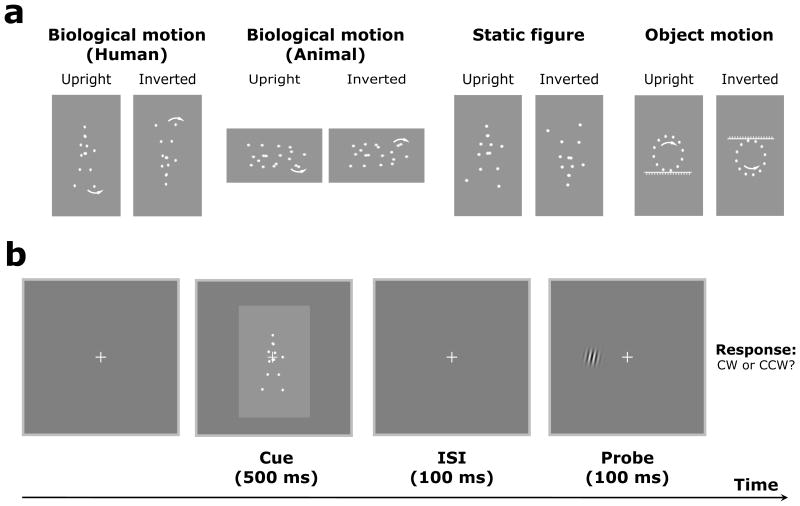Figure 1.
Static frames of sample stimuli used in the current study and schematic representation of the experimental paradigm. (a) Point-light walkers, point-light cats, static frames of point-light walkers, and point-light circles were used in the current study, including both upright and inverted versions. The arrows here indicate the motion direction and were not presented in the actual experiments. (b) After a point-light motion (or static frame) stimulus was presented for 500 ms in each trial, there was a 100 ms inter-stimulus interval (ISI) in which only the fixation was displayed, followed by a small Gabor patch that was presented briefly (100 ms) as a probe on the left or right side of the fixation. The Gabor patch was slightly tilted clockwise or counter-clockwise, and observers were required to press one of two buttons to indicate their perceived orientation of the Gabor patch regardless of the side of presentation. In the beginning of each experiment, observers were explicitly told that the cue (e.g., walking direction) was not predictive of target location.

